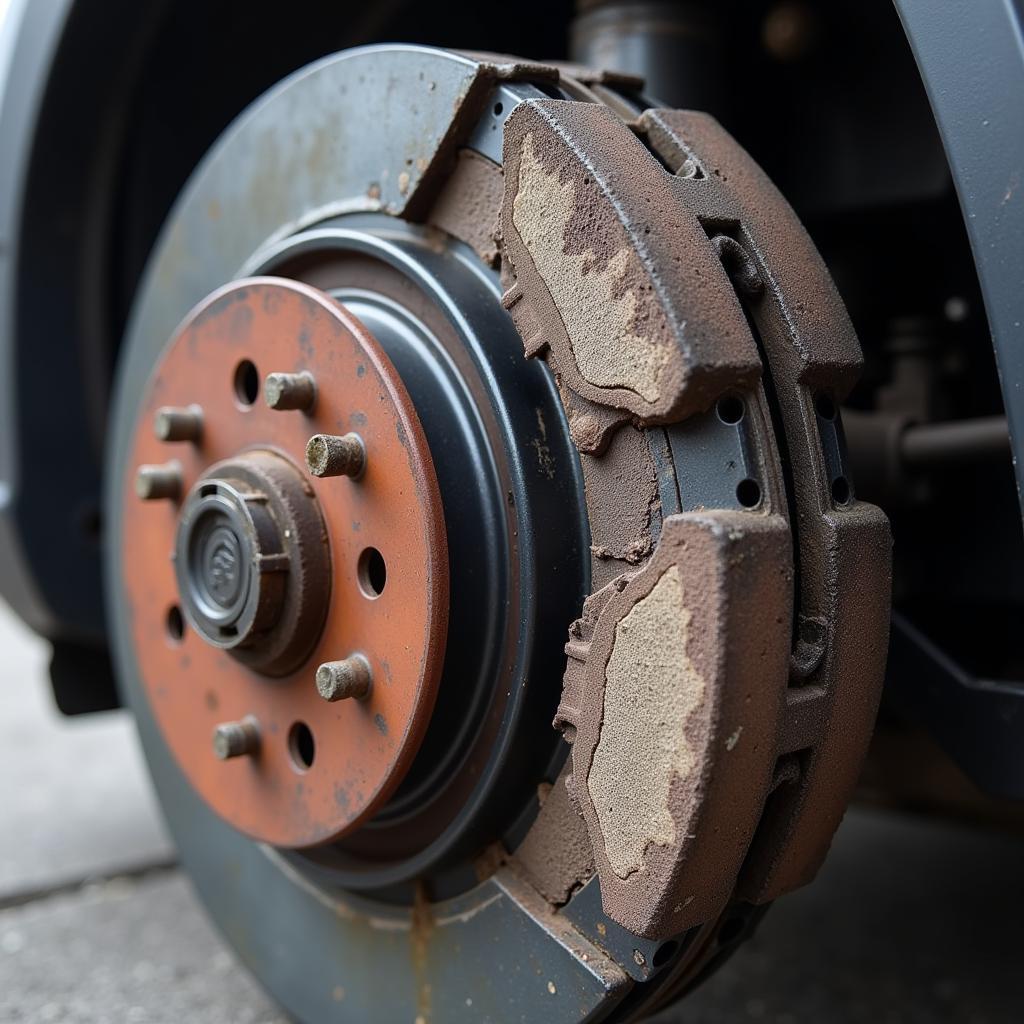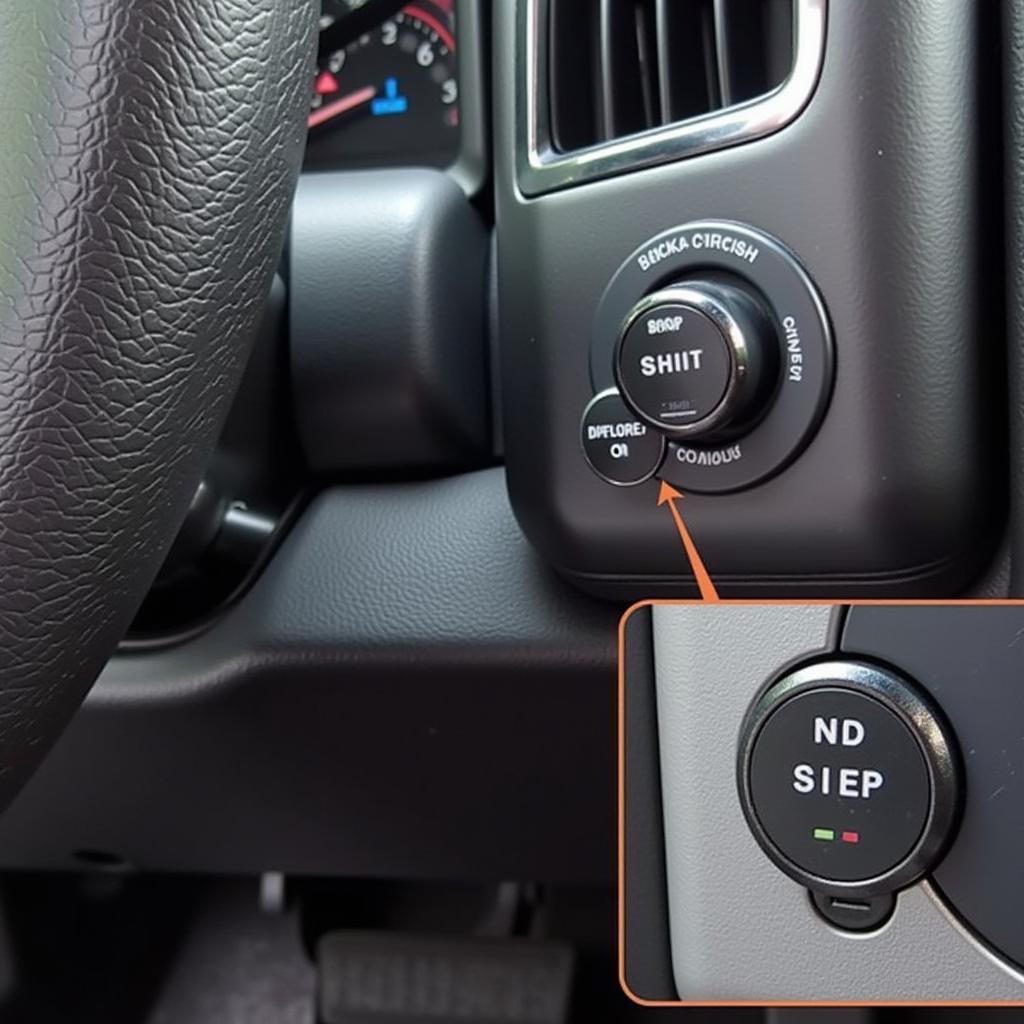The service brakes warning light on your 2014 Chevrolet Impala illuminating is never a welcome sight. This light indicates a potential issue with your braking system, and while it may not always mean an immediate emergency, it should never be ignored. In this article, we’ll delve into the common causes of this warning light, how to diagnose the problem, and the steps you can take to get your Impala braking safely again.
Common Causes of a Service Brakes Warning Light
Several factors can trigger the service brakes warning light in your 2014 Impala. Understanding these causes can help you narrow down the issue and take appropriate action.
- Low Brake Fluid: This is one of the most common reasons for the warning light. Brake fluid is essential for transmitting force from the brake pedal to the wheels, and a leak or low fluid level can significantly reduce braking effectiveness.
- Worn Brake Pads: Brake pads wear down over time due to friction. When they reach a certain thickness, the wear indicator makes contact with the rotor, triggering the warning light.
- Faulty Brake Light Switch: The brake light switch activates the brake lights when you press the pedal. If this switch malfunctions, it can also illuminate the service brakes warning light.
- ABS Issues: The Anti-lock Braking System (ABS) prevents wheel lockup during hard braking. If the ABS system encounters a problem, it can trigger the warning light.
- Electrical Malfunction: A short circuit, damaged wiring, or a faulty sensor within the braking system can also cause the warning light to come on.
Diagnosing the Problem
Identifying the specific cause of the service brakes warning light requires some investigation. Here’s a step-by-step guide:
-
Check Brake Fluid Level: Park your Impala on a level surface and open the hood. Locate the brake fluid reservoir, usually a translucent container with a black cap. Check the fluid level, ensuring it falls between the minimum and maximum markings.
-
Inspect for Leaks: If the fluid level is low, visually inspect the brake lines, hoses, and connections near each wheel for any signs of leaks. Look for wet spots or drips of brake fluid.
-
Check Brake Pad Thickness: If the fluid level is adequate, the next step is to check the brake pad thickness. This usually requires removing the wheels to visually inspect the pads. Look for significant wear or if the pad material is close to the metal backing plate.
-
Scan for Trouble Codes: If a visual inspection doesn’t reveal the problem, connecting a diagnostic scanner to your Impala’s OBD-II port can read stored trouble codes. These codes can pinpoint the specific area of the braking system experiencing issues.
Remote Software Solutions: A Modern Approach
In today’s digitally connected world, even car repairs are going remote. Advancements in automotive technology have paved the way for remote software solutions that can diagnose and sometimes even fix certain car problems, including some braking system issues.
-
Remote Diagnostics: Certified technicians can access your vehicle’s computer system remotely to diagnose the cause of the service brakes warning light. This can save you a trip to the mechanic, especially for initial diagnosis.
-
Software Updates and Fixes: In some cases, a software glitch or outdated module might be causing the warning light. Remote software updates can often rectify such issues without any physical intervention.
-
Limitations: It’s important to note that not all braking system problems can be resolved remotely. Issues like physical damage, leaks, or severe mechanical failures will still require hands-on repair.
“Remote diagnostics and software solutions are revolutionizing the automotive repair industry,” says John Smith, Senior Automotive Engineer at XYZ Automotive. “These technologies are particularly helpful for quick diagnoses and addressing software-related issues. However, it’s crucial to remember that a hands-on inspection by a qualified mechanic is often necessary for comprehensive repair.”
Conclusion
Ignoring the service brakes warning light in your 2014 Chevrolet Impala can compromise your safety and potentially lead to costly repairs. By understanding the common causes, performing basic troubleshooting, and considering remote software solutions, you can address the issue promptly and ensure your Impala continues to brake safely and reliably.
Frequently Asked Questions
-
Can I drive my Impala with the service brakes warning light on?
It’s not advisable. The warning light indicates a potential problem with your brakes. Driving with compromised brakes is dangerous. Seek immediate attention from a qualified mechanic. -
How much does it cost to fix a service brakes warning light?
The cost varies widely depending on the underlying cause. It can range from a simple brake fluid top-up to more expensive repairs like replacing calipers or sensors. -
How often should I get my brakes checked?
A good rule of thumb is to have your brakes inspected at least once a year or every 12,000 miles, or as recommended in your Impala’s owner’s manual. -
Can I add any brake fluid to my Impala?
It’s crucial to use the brake fluid type specified in your owner’s manual. Using the incorrect fluid can damage the braking system. -
How long can I drive with low brake fluid?
Driving with low brake fluid is highly dangerous. If you notice a significant drop in fluid level, it’s best to have your vehicle towed to a mechanic to avoid further damage and potential accidents.


